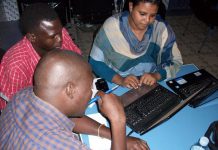
Here we look at the practical steps needed in setting up an editorial collaboration with another news organisation or other information source. In the previous article we looked at what is ‘Collaborative journalism’. In this article we look at how to do it.
Choose partners and define scope
- Who do you want to collaborate with and why?
- Are their values and standards compatible with yours?
- Does their audience add to yours (ie not serving exactly the same area or reach).
- Do they have some expertise (in subject, geography, technology or other) which will add to yours?
You will need to clarify in advance with them the objectives, audience, production roles, output formats and timeline. You may also need to discuss how you resolve any differences in approach.
Set governance and agree workflow
- Establish editorial leadership and dispute-resolution rules.
- Adopt shared workflows: communication platforms (Slack, Signal), project systems (Google Drive, Airtable), editorial calendars, and task assignments.
- Agree ethics, sourcing, fact-checking, and byline guidelines.
Coordinate reporting
Logistical coordination can be challenging. Different organisations often use incompatible systems, follow varying workflows, and operate under different timelines.
Cultural differences between newsrooms can create friction, particularly in international partnerships where professional norms and legal frameworks vary significantly.
Balance centralised leadership with decentralised contributions. If reporters from the different newsrooms are working independently, who holds the centre of the project? Who edits and decides?
- Ensure regular touch-points (e.g., weekly video or phone meetings).
- Share information and data with clear responsibilities allocated for developing editorial leads.
Publish and amplify
- Synchronise publication across platforms.
- Co-brand and cross-publish. This may take significant coordination across geographies and different formats and media.
- Use multimedia: audio, video, infographics, social tools.
- Launch coordinated publication weeks based on events in order to maximise impact (e.g. Covering Climate Now’s 89% Project).
Measure impact
- External funders will be particularly keen to understand what their investment has achieved and what change may follow from it.
- KPIs (key performance indicators): traffic, engagement, social amplification, local resonance, policy uptake will all provide evidence of achievement.
- Surveys and feedback sessions re: authority, relevance, trust can enrich the story of what a multi-party collaboration achieved.
Conclusion
Making a success of collaborative journalism requires thoughtful planning and careful execution.
Just having a good relationship with your collaboration partner is not enough. Relationships can easily go wrong through misunderstanding. There will almost certainly be disagreements along the way, and you need to know how these will be resolved.
You both need to understand clearly what’s expected of you, how it is to be achieved, when the results will be delivered and how you will make the most of them.
If you can navigate through all these complexities and sensitivities, you will have a finished body of work that is better than either of you could have accomplished alone.
Richard Sambrook – Emeritus Professor of Journalism, Cardiff University
Related article

1. Q: What is the primary focus of this article regarding editorial collaborations? A: This article focuses on the practical steps needed in setting up an editorial collaboration with another news organisation or information source, detailing how to do it.
2. Q: What are some key considerations when choosing partners for a collaboration? A: Key considerations include compatibility of values and standards, whether their audience adds to yours (not just overlapping), and if they possess expertise (subject, geography, technology, etc.) that complements yours.
3. Q: Besides choosing partners, what specific aspects need to be clarified in advance with potential collaborators? A: You need to clarify objectives, target audience, production roles, output formats, and timelines. It’s also important to discuss how to resolve any differences in approach.
4. Q: What two main areas need to be established to set governance and agree on workflow? A: You need to establish editorial leadership and dispute-resolution rules, and adopt shared workflows including communication platforms, project systems, editorial calendars, and task assignments.
5. Q: What guidelines should be agreed upon regarding the content of the collaboration? A: Collaborators should agree on ethics, sourcing, fact-checking, and byline guidelines.
6. Q: What are some challenges that can arise during the logistical coordination of reporting in a collaboration? A: Challenges can include incompatible systems, varying workflows and timelines, and cultural differences between newsrooms, especially in international partnerships.
7. Q: Who typically holds the “center of the project” if reporters from different newsrooms are working independently? A: The text implies that despite decentralized contributions, there needs to be a clear understanding of who edits and decides and who holds the central leadership of the project.
8. Q: What are some key actions to take during the “Publish and amplify” stage of a collaboration? A: Key actions include synchronising publication across platforms, co-branding and cross-publishing, using multimedia, and launching coordinated weeks to maximize impact.
9. Q: Why is measuring impact particularly important, especially for collaborations with external funders? A: External funders are keen to understand what their investment has achieved and what change may follow from it.
10. Q: What are some examples of Key Performance Indicators (KPIs) used to measure the impact of a collaborative journalism project? A: KPIs can include traffic, engagement, social amplification, local resonance, and policy uptake. Additionally, surveys and feedback sessions can provide insights into authority, relevance, and trust.








